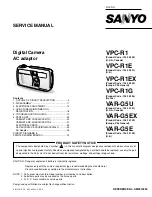
Quick Getting Started
USB Port
Cisco 350, 350X and 550X Series Managed Switches, Firmware Release 2.4, ver 0.4
21
1
Stack Support
The OOB port name is always mapped to the physical OOB port of master unit. The physical
OOB ports of slaves are not functional and will not establish a link when connected to a
neighbor device or PC.
USB Port
The USB port can be used for connecting external storage (disk-on-key) devices. It can hold
configuration, SYSLOG and image files. In a stack, only the master’s USB port is active. The
USB port fully supports the FAT32 file system, and provides partial support (read only) for the
NTFS file system.
Both relative path or fully qualified paths can be used.
The system supports the following user actions on the USB port through the GUI:
•
Display the USB contents
•
Copy files to/from USB (the same as with TFTP)
•
Delete, rename and display the contents of USB files
Stacking the Switches
By default, the ports on a switch function as regular Ethernet ports, except if you configure
them to do stacking. You cannot mix the stack speeds between the switches or ports.
See the front panel figures in
98DX4203, 98DX4204, 98DX4210, 98DX4211, and
to help with the stack port descriptions and supported modules.
WARNING
Stack ports must be either configured with the same port speed or have the same speed
capability on the module or cable plug in. If the port speed is configured as auto, then the
module plugged into these two ports will need to have the same speed capability, otherwise the
switch will not be able to form as a stack with multiple units.
A stack can have up to four 350X devices or eight 550X devices in it. Any 10G port of the
switch can be used for stacking. The switch can only be stacked without Mesh topology.
















































